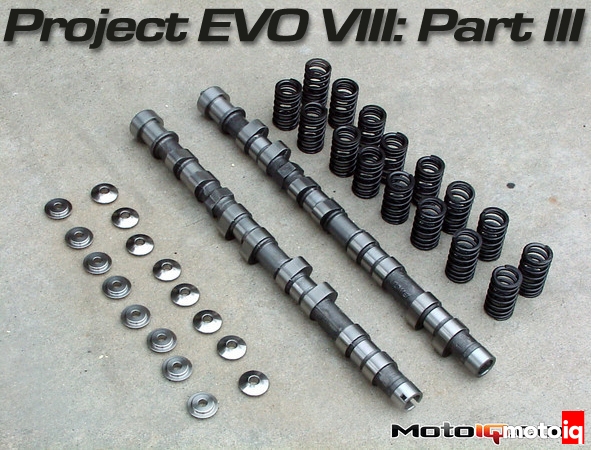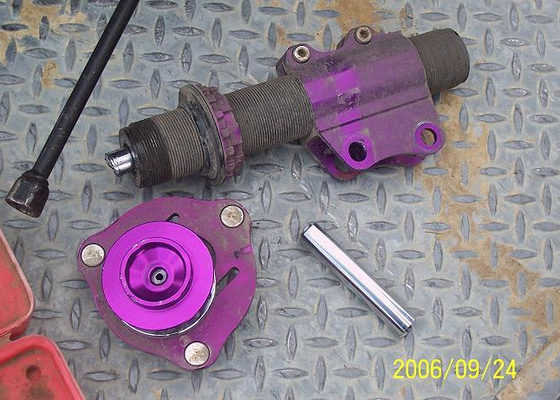
Project EVO VIII part 3, Into the Engine, Basic Bolt Ons
By Mike Kojima
I hate California 91 octane premium fuel. Apparently so does Project EVO. California gas is to fuel as bud light is to beer. Less octane more detonation. Although we used some of the best bolt on parts available for the EVO, we were thwarted at every turn by California’s urine-like fuel. When looking at our results, they are disappointing compared to what tuners in other parts of the country are getting. Typically California gas strips 30-50 hp from a turbocharged car with modern fuel injection and Project EVO was no exception. We hate excuses even more than California gas so we pledge that we will continue to develop the car until we get some more respectable numbers out of it.
To see the other segments of Project EVO
EVO 8 Performance, we made the conversion of our car from a HIN show car to a more performance oriented build. In EVO 8 Braking and Handling of our series we tackled the difficult task of squeezing more stick and balance in the corners of an already finely tuned cornering machine without reducing its refinement as a daily driver. We also improved the stamina of its already powerful brakes in anticipation of hard track use and more power from the motor. In part three we will attempt to squeeze more power out of the EVO’s tried and true 4G63 engine.
Before Dynoing Project EVO VIII we replaced all of our fluids with synthetic high performance lubricants from Motul. Motul’s 300V racing oil in 15w50 weight was run in the engine to give the Turbocharged 4G63 engine more protection. Note that EVO’s use synthetics as factory fill so having good quality oil is important. We also notice that the turbo 4G63 is hard on oil which get contaminated quickly and tends to burn a lot of oil, the thicker 15w50 should helps with this. The transfercase, transmission and differentials were filled were filled with Motul Gear Comp 75W-140, Motul’s severe duty 100% synthetic gear oil.
From our baseline dyno runs we knew we were going to have a hard time with Project EVO. Strapped to XS Engineering’s 4WD dyno in stock trim, we experienced a lot of variability when attempting to get a solid baseline stock power run. The EVO’s knock sensor has a lot of command authority over spark, mixture and boost and with California’s exceedingly poor fuel, we were getting trace knock. The ecu was attempting to get rid of the knock and thus the boost and spark advance were all over the place. So was the engines power.
Let me explain. Ask any Californian with a turbocharged car about how bad our gas is. Our 91 octane usually means 2-4 psi less boost and/or 4-6 degrees less advance than other states 93 octane fuel. As a tuner, I suspect that the volatility rating of California gas makes it even more knock sensitive than its 91 octane suggests. Our 91 acts like how I remember old 89 octane used to as far as detonation threshold and EGT. Pity us America. Our project car is a very early production model. Early EVO VIII’s had some issues with their tuning. We suspect our car has a pretty aggressive timing map from the factory and the car is constantly hitting knock. This variability was improved with later VIII’s.
After many runs, we picked 232 hp as our baseline. This was approximately in-between our recorded high and low hp thresholds. Our run to run variation was as extreme as plus minus 5 hp! As a first step we bolted on Vishnu Performance Systems standard dump back exhaust system. We chose this system over Vishnu’s more expensive turbo back and signature series systems because the EVO has a pretty cool divorced wastegate turbine housing and outlet elbow from the factory. The wastegate discharge exhaust flow, which can interfere with the flow coming out of the turbine, is kept separate until it’s smoothly merged with the turbine flow downstream. This seemingly minor detail is usually good for up to 5-10 hp and a few hundred rpm earlier spool so why mess with this excellent bit of stock engineering, at least for now.




